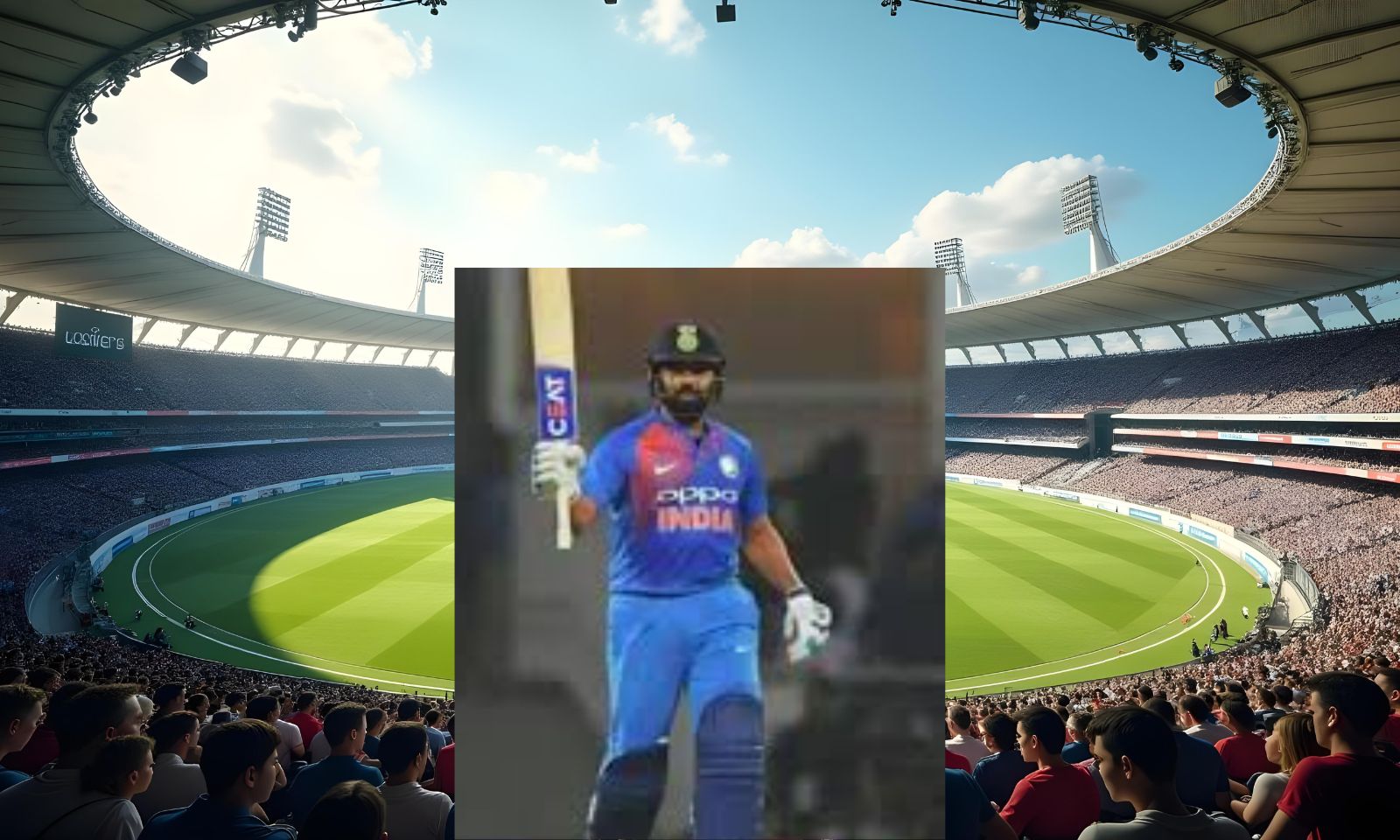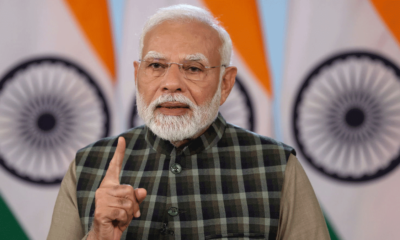Sports
Albanese Meets Cricket Teams: Essential Insights You Need to Know

As the much-anticipated Sydney Test between India and Australia approaches, Australian Prime Minister Anthony Albanese made a significant gesture by meeting both cricket teams. This rare meeting highlights Albanese’s strong support for cricket and its players. It also emphasizes how cricket plays a key role in uniting both Australia and India, showcasing the spirit of the India-Australia rivalry.
“Acknowledging Excellence in Cricket”
Albanese took this opportunity to personally recognize the players’ hard work, especially India’s standout fast bowler, Jasprit Bumrah. Known for his precision and ability to change the flow of the game, Bumrah has been exceptional in the ongoing series. Albanese’s praise of Bumrah highlights the importance of individual contributions to team sports, underscoring the level of cricket unity that exists in the sport.
“The spirit of cricket goes beyond borders. The players here represent the best of both our countries,”
Albanese said. His words reflect cricket’s ability to unite people across nations, with the sport holding deep cultural significance in both Australia and India.
“Boosting Morale Ahead of the Sydney Test”
This meeting also served as a morale boost for the players, particularly as the India-Australia rivalry is intense.
As both teams prepare for an exciting contest in Sydney, Albanese’s message of sportsmanship reminded everyone of the true spirit of the game. The meeting emphasized the power of cricket motivation in helping players stay focused and motivated.
For the Indian team, the meeting was a moment of recognition for their commitment and exceptional performances. Bumrah, in particular, was praised for his ability to break key partnerships and shift momentum in India’s favor.
“National Pride and Motivation”
The Australian team also benefited from Albanese’s support. The Prime Minister’s visit reminded them of the national pride at stake in this crucial match. His encouragement motivated the players to perform at their highest level, reinforcing the connection between the team’s effort and the nation’s pride in Australian cricket.
“A Celebration of Cricket’s Power to Unite”
As the Sydney Test approaches, Albanese’s gesture serves as a reminder that cricket is more than just competition. It is about mutual respect, national pride, and unity. Albanese’s support underscores the unifying power of sports, transcending borders and rivalries, which is especially evident in the India-Australia rivalry.
The Sydney Test is set to be memorable not only for the exciting cricket action but also for the sportsmanship and unity displayed by both teams. With both sides eager to give their best, Albanese’s endorsement will leave a lasting impact on the players and fans alike, reinforcing the spirit of cricket unity.
“Conclusion: A Moment to Remember”
Ultimately, Albanese’s meeting with the cricket teams reinforces cricket’s role in bringing people together. As both teams prepare for the Sydney Test, this moment of support and encouragement will inspire both players and fans. The match promises to be unforgettable, with high-level cricket and the spirit of camaraderie on display.
Watch and Subscribe to the YouTube Channel: EBT Entrepreneur Business Times
Sports
India’s Sports Market Set to Reach $130 Billion by 2030: What You Need to Know
India’s sports market is expected to grow at a CAGR of 14%, reaching $130 billion by 2030, thanks to government support, digital platforms, and increasing sports diversity.

India’s sports industry is set to experience significant growth, with projections showing a market size of $130 billion by 2030. According to a recent report from Google and Deloitte, the Indian sports market will grow at a compound annual growth rate (CAGR) of 14%. This makes India one of the fastest-growing sports markets globally. The growth reflects not only the nation’s passion for sports but also government-led initiatives such as Khelo India and Fit India Movement, aimed at promoting physical fitness and talent development.
“What’s Driving This Growth?”
Several factors are contributing to the rapid expansion of India’s sports economy:
Government Support
Government programs like Khelo India and the Fit India Movement are essential in driving sports infrastructure development and supporting young talent. These initiatives focus on improving sports facilities and encouraging a fitness culture nationwide. The Khelo India initiative, in particular, has been crucial in identifying emerging athletes, especially in rural and semi-urban areas, thus contributing to the overall sports market 2030 growth.
Rise of Other Sports
While cricket remains the dominant sport, interest in other sports such as football, badminton, kabaddi, and athletics is growing rapidly. The success of Indian athletes on the global stage, especially in events like the Olympics and Asian Games, has fueled this rise. As a result, India’s sports market growth is diversifying, with previously overlooked sports gaining popularity and contributing to the Indian sports economy.
Digital Revolution
The digital revolution has been a key driver of growth in the sports industry. Digital streaming platforms like Hotstar, SonyLIV, and JioCinema have made sports more accessible to people nationwide. Moreover, the rise of fantasy sports and e-sports is attracting a younger audience, creating new revenue streams, and enhancing the reach of India’s sports market.
Demand for Sports Content
There is also an increasing demand for high-quality sports content, such as live coverage and expert analysis. This demand is creating new business opportunities for broadcasters, content creators, and influencers, all contributing to the booming sports economy in India.
“Economic Impact and Job Creation”
The rapid expansion of India’s sports industry is expected to generate broad economic benefits.
By 2030, India’s sports market could create over 10.5 million jobs in sectors like event management, sports marketing, coaching, and sports equipment manufacturing. Additionally, the industry is forecasted to generate $21 billion in tax revenue, further fueling the country’s economic growth. The development of sports infrastructure—including new stadiums, training centers, and fitness facilities—will boost job creation and benefit allied industries such as tourism and hospitality.
“Challenges and Opportunities”
While India’s sports market is on track for impressive growth, there are several challenges to overcome.
One of the key challenges is ensuring access to quality sports facilities and training programs in rural and semi-urban areas. Additionally, securing consistent funding and sponsorship for emerging sports and athletes remains a concern. However, these challenges also present opportunities. By fostering public-private partnerships, securing corporate sponsorships, and encouraging international collaborations, India can build a more inclusive and sustainable sports ecosystem, contributing to the continued growth of the sports industry.
“Looking Ahead”
India’s sports market is on a promising growth trajectory.
With strong government support, increased interest in diverse sports, and technological advancements, the Indian sports economy is set to make a significant impact. By 2030, India has the potential to become a global leader in sports, promoting a healthier, more active society. With the right investments and innovative strategies, India’s sports market 2030 vision can be fully realized, positioning the nation as a $130 billion sports powerhouse.
Watch and Subscribe to the YouTube Channel: EBT Entrepreneur Business Times
Sports
Rohit Sharma’s Leadership Crisis: What You Need to Know
Rohit Sharma’s leadership is under scrutiny after India’s recent defeat in Melbourne. His decision to open the batting has raised concerns about his form and impact on the team’s morale.

India’s recent defeat in Melbourne has raised questions about the leadership of captain Rohit Sharma. Once seen as a composed and dynamic leader, Sharma now faces criticism, particularly regarding his decision to open the batting. This choice has divided opinions, with some suggesting it might have affected his form and the team’s morale. His leadership and batting position are now under scrutiny, as many believe that both might have influenced India’s performance.
“Focus on Leadership and Batting Decisions”
Rohit Sharma, who became India’s cricket captain after Virat Kohli stepped down, has led the team to numerous victories.
However, the recent Melbourne defeat has shifted attention to his leadership style, especially his decision to open the batting in the match. Opening the batting is a demanding role, requiring a combination of technique, temperament, and the ability to face the opposition’s best bowlers early on. Although Sharma is known for his aggressive stroke play, his recent form as an opener has been inconsistent, leading to concerns. Some analysts believe that Rohit Sharma’s batting position has disrupted the team’s balance and may be affecting his overall performance, which, in turn, impacts the team’s performance.
The role of opening the batting requires skill and mental strength. While Rohit Sharma is a natural fit for the position due to his aggressive playstyle, his struggle to convert starts into big scores has caused some to question if the pressure of opening has affected his form. This might be influencing his leadership and team morale.
“Impact on Team Morale and Leadership Effectiveness”
Critics argue that Rohit Sharma’s batting struggles could be lowering the team’s morale.
As captain, his role goes beyond just leading with the bat; he needs to inspire confidence and create a winning atmosphere. If the captain is out of form, particularly in such a key role, it can affect the other players, leading to a drop in their confidence. This could harm the overall team performance. The mental aspect of cricket is just as important as the technical skills, and many believe that Sharma’s recent batting failures have led to a loss of confidence within the team.
Additionally, some former cricketers and analysts have raised concerns about Rohit Sharma’s leadership during critical moments. While his calm demeanor is praised, questions have arisen about whether his leadership is assertive enough during high-pressure situations. Decisions on field placements and tactical moves are now being closely examined, further adding to the scrutiny surrounding his captaincy.
“Rohit Sharma’s Response to Criticism”
Despite the growing criticism, Rohit Sharma remains unfazed.
He emphasized that cricket is a team sport, where both victories and losses are shared by everyone. He defended his decision to open the batting, saying he feels comfortable in the role and believes his experience is valuable to the team.
However, the loss in Melbourne has increased the pressure on Rohit Sharma, forcing him to reflect on his leadership and batting decisions. The next few months will be critical as he looks to navigate these challenges and guide India back to winning ways.
“Looking Ahead: A Critical Time for Rohit Sharma’s Captaincy”
India has experienced many leadership changes over the years, each with its challenges. Rohit Sharma, who has faced pressure before, must now prove his ability to lead under scrutiny. How he handles this situation will be key in determining his legacy as India’s captain. His ability to address concerns from both critics and fans, while continuing to lead effectively, will shape his future as one of India’s most respected cricket leaders.
In conclusion, Rohit Sharma’s leadership is under intense scrutiny following India’s Melbourne defeat. It’s important to remember that cricket is full of ups and downs. Leadership is often tested in moments of adversity, and how Sharma navigates this situation will define his captaincy. The next few months will be crucial as Rohit Sharma seeks to restore confidence in the team and lead India back to victory.
Watch and Subscribe to the YouTube Channel: EBT Entrepreneur Business Times
Sports
Pickleball’s Rapid Growth in India: What You Need to Know
Pickleball is becoming one of the fastest-growing sports in India. With its easy-to-learn rules and broad appeal, the sport is attracting players from all age groups and is spreading rapidly across the country.

In recent years, pickleball has become one of the fastest-growing sports in India. Combining elements of tennis, badminton, and table tennis, this easy-to-learn paddle game is gaining popularity across the country. From big cities to small towns, people of all ages are enjoying pickleball for its simplicity, fast pace, and fun. Pickleball in India is quickly becoming a favorite recreational activity that blends fitness and enjoyment.
“Rapid Growth and Popularity”
Pickleball’s rise in India has been impressive.
Recent reports show that over 50,000 players have taken up the sport, and nearly 500 courts have been set up nationwide. What was once an unknown game is now becoming a mainstream recreational sport in India. This remarkable growth highlights the increasing interest in non-traditional sports and the expanding popularity of fitness sports in India. The rise of pickleball reflects a shift toward more accessible and engaging fitness activities.
There are several reasons for pickleball’s success. The sport is very accessible because it doesn’t require a lot of physical strength or stamina, making it suitable for all age groups. Whether you are young, middle-aged, or a senior, pickleball offers a low-impact way to stay active and have fun. Its simple rules allow anyone to jump in and start playing without needing years of practice. This makes pickleball a standout sport in the growing trend of fitness sports in India.
“A Game for All Ages”
One of the best things about pickleball is that it appeals to people of all ages.
It can be played both indoors and outdoors, which makes it flexible and easy to enjoy anywhere. The game is played on a small court, which means it is not too tiring, even for beginners. For families, pickleball is a great way to spend time together, as it doesn’t require expert skills. Seniors, in particular, have embraced it as a fun and gentle way to exercise. The game’s appeal across various age groups further highlights the rising pickleball popularity in India.
“Growing Infrastructure and Support”
The increasing popularity of pickleball in India is supported by a growing number of courts.
Major cities like Delhi, Mumbai, Bengaluru, and Hyderabad now have dedicated pickleball courts and smaller towns are starting to follow suit. Sports complexes and recreational centers across India are also offering facilities for pickleball, making the sport more accessible. This development is essential for the future of growing sports in India like pickleball.
Organizations like the All India Pickleball Association (AIPA) are working hard to grow the sport. The AIPA helps promote pickleball, organizes national tournaments, and connects players with coaches. Their efforts are helping pickleball reach more people at the grassroots level, further fueling the growth of pickleball in India.
“Pickleball: From Fun to Competitive Sport”
Pickleball started as a fun game, but it is quickly becoming a competitive sport in India.
National and international tournaments are giving Indian players the chance to compete on a global stage. Indian players are now taking part in international competitions, showing the world India’s growing interest in the sport. This competitive edge highlights pickleball’s transition from a recreational activity to a recognized sport on the global stage.
Pickleball’s rise has also attracted corporate sponsors, who are funding tournaments and promotional events. These sponsors help spread awareness of the sport and bring new players to the game, further accelerating its pickleball popularity in India.
“Looking Ahead: A Bright Future for Pickleball in India”
Pickleball’s growing popularity in India shows the country’s increasing interest in non-traditional sports. With its simple rules, low-impact nature, and broad appeal, pickleball is set to become a regular part of India’s sports culture. As more courts are built and the sport gains more recognition, its popularity will continue to grow. Whether for fitness, recreation, or competition, pickleball is making a lasting impact on India’s sports scene and will likely remain a favorite for years to come. The sport’s rise is a clear reflection of the changing dynamics of growing sports in India and their positive effect on both personal fitness and national sports culture.
Watch and Subscribe to the YouTube Channel: EBT Entrepreneur Business Times
-

 Cover Story1 week ago
Cover Story1 week agoDonald Trump’s Key Policies: Essential Insights You Need to Know
-

 Cover Story1 week ago
Cover Story1 week agoMaha Kumbh Mela 2025: Essential Insights You Need to Know
-

 Cover Story1 week ago
Cover Story1 week agoNarendra Modi’s Leadership and Vision for India’s Future: What You Need to Know
-

 Business2 weeks ago
Business2 weeks agoWomen Entrepreneurs’ Impact on Business Growth: What You Need to Know
-

 Pharma1 month ago
Pharma1 month agoIndia’s Pharma Industry Transformation: What You Need to Know
-

 EV1 month ago
EV1 month agoIndia’s New EV Charging Guidelines: Essential Insights You Need to Know
-

 Auto1 month ago
Auto1 month agoOsamu Suzuki’s Impact on India’s Automotive Industry: What You Need to Know
-

 Pharma1 month ago
Pharma1 month agoIndia’s Pharmaceutical Growth: What You Need to Know










